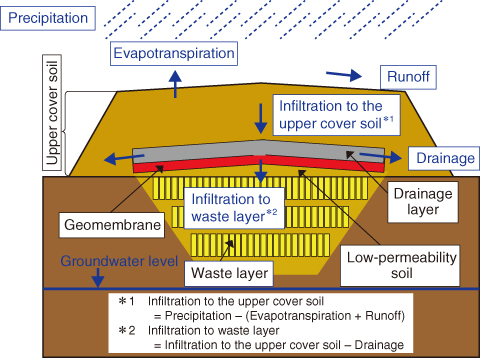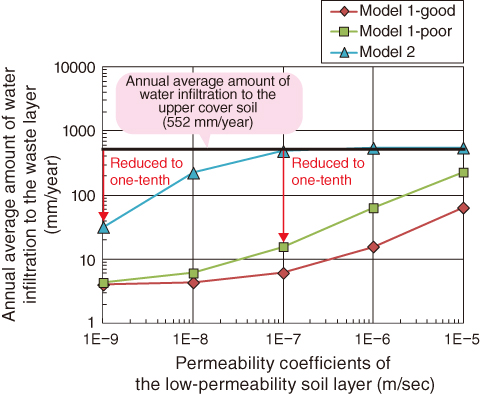
Fig.8-11 Model of water flow through upper cover soil at the facility
Table 8-1 Resulting runoff, evapotranspiration, and water infiltration into upper cover soil


Fig.8-12 Result of water infiltration in the waste layer
We are considering to dispose of very low-level radioactive waste in the trench facility. The waste layer is placed above the groundwater level; therefore, to evaluate the safety of the facility, we must determine if the upper cover soil prevents rainfall from infiltrating into the waste layer.
As shown in Fig.8-11, two models were evaluated, i.e., Model 1, in which drainage, geomembrane, and a low-permeability soil layer were installed in the upper cover soil, and Model 2, in which a low-permeability soil layer thicker than that of Model 1 was installed, but without a geomembrane. Specifically, after obtaining the rainfall infiltration in the upper cover soil based on the weather conditions of Japan, we determined for both the models the extent to which water infiltrates in the waste layer as a function of the permeability coefficients of the low-permeability soil layer.
A set of pseudo weather data was used in this determination. Using a Fourier series and a gamma distribution, the pseudo weather data were created from real weather data (i.e., precipitation, temperature, and solar radiation) observed daily at a single measurement point in the Kanto area, Japan, which has an annual rainfall of approximately 1200 mm. For the geomembrane, we used the following parameters: a permeability coefficient of 1 × 10−11 m/sec (standard value), a constant deflection (poor) or slight deflection (good), and the number of flaws per hectare. The permeability coefficients of the low-permeability soil layer were set within the range between that of sandy soil and clay. Based on these conditions, we calculated the water infiltration in the upper cover soil and the waste layer of the facility.
The results indicate an annual average water infiltration in the upper cover soil of approximately 550 mm for an average annual rainfall of approximately 1200 mm (Table 8-1). Fig.8-12 shows that the annual average water infiltration in the waste layer was reduced to less than one-tenth of the water infiltration in the upper cover soil when the low-permeability soil layer has a permeability coefficient below 1 × 10−7 m/sec in Model 1 and below 1 × 10−9 m/sec in Model 2. In addition, we confirmed that drainage increases as the permeability coefficient of the low-permeability soil layer decreases.
The study concludes that using a low-permeability soil layer is effective for suppressing water infiltration in the waste layer of the trench facility. Moreover, placing a geomembrane suppresses water infiltration.